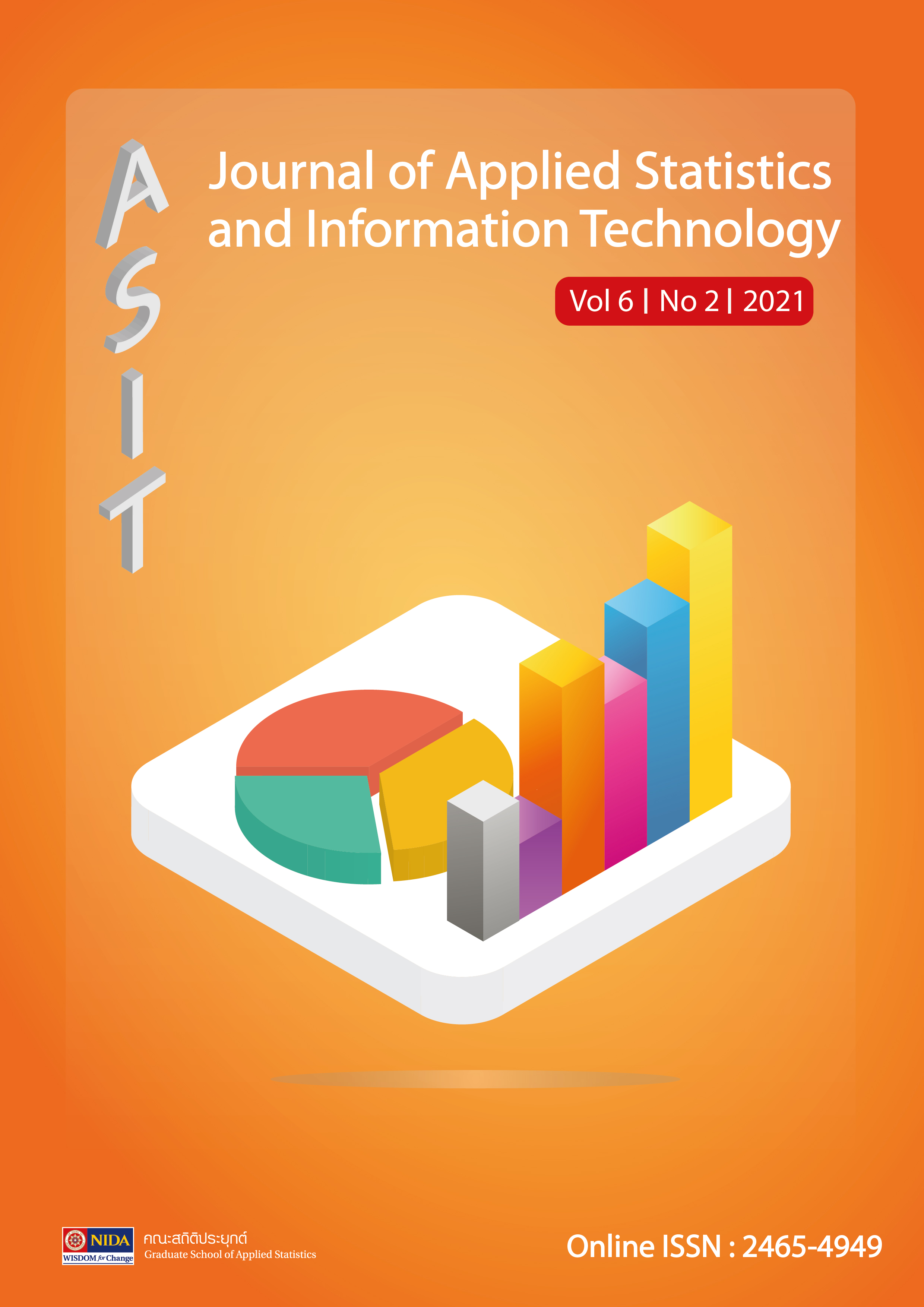A Comparison of survival rate breast cancer patients after chemotherapy combined with other treatments in National Cancer Institute
Abstract
This study aimed to determine the survival rates of Treated Breast Cancer Patients with only Chemotherapy or combined Chemotherapy with other modalities, i.e. Chemotherapy with radiation therapy, Chemotherapy with surgery, and three methods combinations whether is Chemotherapy, Radiation therapy, and Surgery, classified according to the degree of breast cancer and secondary data obtained from the National Cancer Institute. A total of 1,398 patients were treated from January 1, 2012, to December 31, 2018, and follow-up until December 31, 2020. The statistics used in the analysis were percentage, mean, portion, standard deviation, survival rate analyzed by Kaplan Meyer method and uses the Log-Rank Test as a statistical test. which the research found.
The survival rate of 1398 breast cancer patients treated with only Chemotherapy or combined Chemotherapy with other modalities, with 232 deaths. In the early stages, Chemotherapy with surgery is most suitable. Which has a survival rate of 53% (95% CI: 47.76-58.24). The second and third stages including patients whose phases cannot be identified. The best method is only Chemotherapy which has survival rates were 50% (95% CI: 47.85-52.15), 59(95% CI: 56.30-61.70), and 62(95% CI: 61.00-62.99), respectively. In the fourth stage, there was no significant difference between the treatment methods.
The results of this study can be used to guide decision-making on the use of appropriate treatments for the stage of breast cancer to improve survival in breast cancer patients.
Downloads
Published
How to Cite
Issue
Section
License
Copyright (c) 2021 Journal of Applied Statistics and Information Technology

This work is licensed under a Creative Commons Attribution-NonCommercial-NoDerivatives 4.0 International License.
เนื้อหาและข้อมูลที่ปรากฏในบทความที่ตีพิมพ์ในวารสารสถิติประยุกต์และเทคโนโลยีสารสนเทศถือเป็นความคิดเห็นส่วนบุคคลของผู้เขียนแต่ละท่าน ความผิดพลาดของข้อความและผลที่อาจเกิดจากนำข้อความเหล่านั้นไปใช้ผู้เขียนบทความจะเป็นผู้รับผิดชอบแต่เพียงผู้เดียว บทความ ข้อมูล เนื้อหา รูปภาพ ฯลฯ ที่ได้รับการตีพิมพ์ในวารสารถือเป็นลิขสิทธิ์ของวารสาร หากบุคคลหรือหน่วยงานใดต้องการนำทั้งหมดหรือส่วนหนึ่งส่วนใดไปเผยแพร่ต่อหรือเพื่อกระทำการใดๆ จะต้องได้รับอนุญาตเป็นลายลักอักษรณ์จากวารสาร ก่อนเท่านั้น



